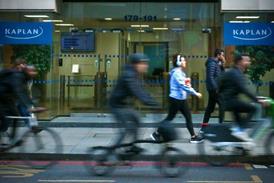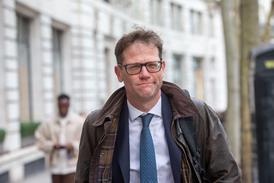The historic Hillsborough inquests ended with a resounding vindication of a 27-year struggle for the truth.
On 26 April, the longest inquests and jury hearing in English legal history finally drew to a close. The conclusions reached by the jury of nine provided a resounding vindication of the 27-year struggle for truth and justice pursued by the families of the 96 victims of the Hillsborough stadium disaster.
Of the 14 questions put to the jury, all of which were answered as the families had hoped, questions six and seven (on whether or not the fans had been unlawfully killed, and if they had, in any way, contributed to the disaster) were pivotal. The atmosphere in the courtroom in the seconds leading up to the final conclusions was electric; the outpouring of raw emotion from the families moments later equally so.
Despite all that has been achieved legally, it is shameful that it has taken so long for the truth of the events to be unearthed, tested and proven.
The route to the inquests has been long and tortuous. We had the 1989 Taylor Inquiry, the original flawed inquests (which recorded the causes of death as ‘accidental’), criminal and disciplinary investigations, judicial reviews and the 1997 investigation led by Lord Justice Stuart-Smith.
In 1999, we saw the private prosecutions of the match commanders, followed by the then secretary of state Andy Burnham’s attendance at Anfield in 2009, where he was visibly moved by the crowd’s shouts of ‘justice for the 96’, leading to his intervention with the then prime minister Gordon Brown and the instigation of the Hillsborough Independent Panel.
The findings in the 2012 HIP report not only laid bare many of the flaws in the original inquests, but revealed the subsequent attempts by the police to conceal their failings and to throw blame on the fans.
In December 2012, on the application of the attorney general under section 13 of the Coroners Act 1988, Lord Chief Justice Igor Judge quashed the original findings and ordered that new inquests be held.
They began in a specially constructed court in Warrington in March 2014. While bound by the usual remit (to establish the ‘how’, ‘when’ and ‘why’ of the deaths), these inquests investigated not only the lead-up to events and the events themselves, but also the responses of the emergency services and the subsequent cover-ups (referred to during the process as ‘evidence-gathering’).
This time the deceased were placed centre stage, commencing with each family reading out a pen portrait of their loved one; a process so moving that the jury often had to retire after each portrait was delivered to recover composure.
Thereafter, the jury and the court (with families and survivors) listened daily to testimony and watched footage covering every aspect of the disaster, including the crowding at the Leppings Lane turnstiles, the opening of the gate (not, as it transpired, forced open by the fans, but opened on the instruction of the match commander David Duckenfield, a lie he maintained until his oral evidence), the crush in the pens as well as the responses of the police, ambulance service and fans.
The court also heard extensive expert evidence from both pathologists and intensivists (giving evidence together) as to the medical causes of death and survivability. The movements of each victim were traced through witness accounts and by painstaking examination of audio visual footage taken on the day, revealing, often for the first time, the exact circumstances of death and sometimes the identity of those who had tried to help or care for the deceased in their last moments.
This process and the outcome – many years too late – demonstrates the efficacy of the Article 2 inquest, when properly conducted in front of a jury and with the families having equality of representation.
Following the historic conclusions, another equally poignant line has been added to the call for ‘justice for the 96’. That line is simply: ‘96 vindicated’.
Marcia Willis-Stewart, a partner at Birnberg Peirce & Partners, was the lead lawyer for the legal team acting on behalf of more than 70 of the 96 families at the Hillsborough inquests

















![David Lester (senior partner at Blythe Liggins), Darryl Barnes, Jagdeep Sandher (head of dispute resolution at Blythe Liggins)[4]](https://d1d8vslyhr7rdg.cloudfront.net/Pictures/274x183/4/2/8/116428_davidlesterseniorpartneratblytheligginsdarrylbarnesjagdeepsandherheadofdisputeresolutionatblytheliggins4_981603_crop.jpg)









4 Readers' comments